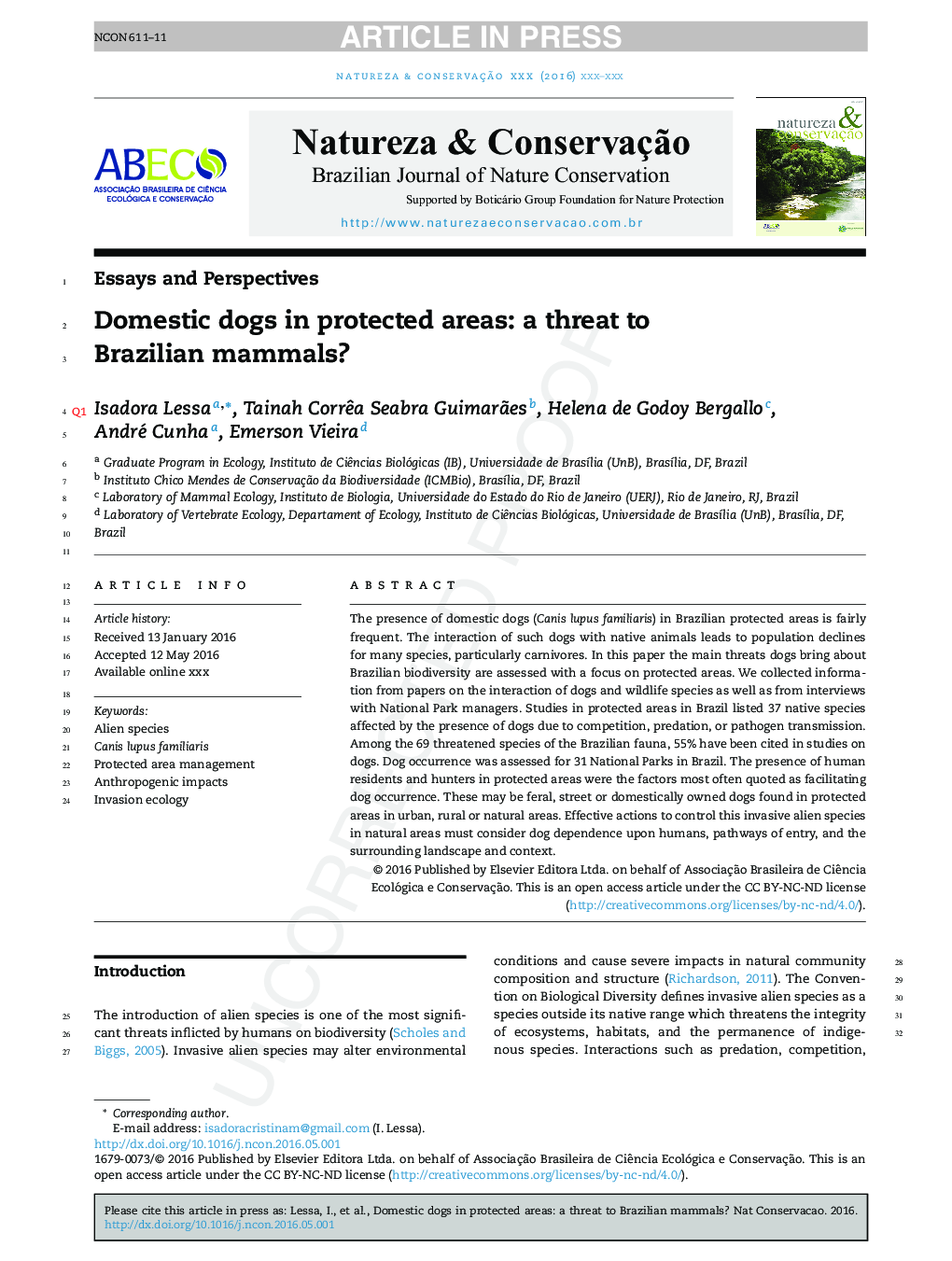| Article ID | Journal | Published Year | Pages | File Type |
|---|---|---|---|---|
| 8849443 | Natureza & Conservação | 2016 | 11 Pages |
Abstract
The presence of domestic dogs (Canis lupus familiaris) in Brazilian protected areas is fairly frequent. The interaction of such dogs with native animals leads to population declines for many species, particularly carnivores. In this paper the main threats dogs bring about Brazilian biodiversity are assessed with a focus on protected areas. We collected information from papers on the interaction of dogs and wildlife species as well as from interviews with National Park managers. Studies in protected areas in Brazil listed 37 native species affected by the presence of dogs due to competition, predation, or pathogen transmission. Among the 69 threatened species of the Brazilian fauna, 55% have been cited in studies on dogs. Dog occurrence was assessed for 31 National Parks in Brazil. The presence of human residents and hunters in protected areas were the factors most often quoted as facilitating dog occurrence. These may be feral, street or domestically owned dogs found in protected areas in urban, rural or natural areas. Effective actions to control this invasive alien species in natural areas must consider dog dependence upon humans, pathways of entry, and the surrounding landscape and context.
Keywords
Related Topics
Life Sciences
Agricultural and Biological Sciences
Ecology, Evolution, Behavior and Systematics
Authors
Isadora Lessa, Tainah Corrêa Seabra Guimarães, Helena de Godoy Bergallo, André Cunha, Emerson M. Vieira,
